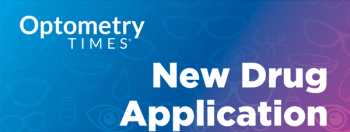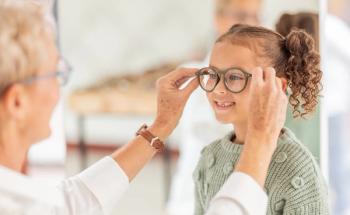
Trends in atropine prescribing and dosing before, during, and after the COVID-19 pandemic
Increases in the doses of atropine were most common following the pandemic and especially among patients for whom therapy was initiated with the 0.01% dose.
A new study of the prescribing patterns and changes in doses of atropine to treat myopia before, during, and after the COVID-19 pandemic found both that the prescribing patterns changed over time and that different doses were used after the pandemic. Increases in the doses of atropine were most common following the pandemic and especially among patients for whom therapy was initiated with the 0.01% dose. A team of investigators led by Michael Aaby, reported his team’s findings at the Association for Research in Vision and Ophthalmology 2025 annual meeting in Salt Lake City. He is an MD Candidate at the Oregon Health & Science University, Portland.
Aaby and his colleagues conducted a retrospective chart review of patients treated with atropine to address myopia. The study goal was to evaluate trends in low-dose atropine prescriptions concentrations before, during, and after the COVID-19 pandemic. They focused on determining the impact of the baseline atropine dose on the patients’ clinical management and follow-up.
Three academic medical centers participated in the study: the Casey Eye Institute, Oregon Health & Science University (112 patients); Lurie Children’s Hospital, Chicago (108 patients), and Children’s Hospital of Orange County, Orange, CA (data unknown). Patients were included who were 3 to 17 years of age and had received atropine therapy for one or both eyes for ± 4 weeks. In addition, the enrolled patients underwent one or more follow-up visits that included the best-corrected visual acuity and spectacle information after treatment.
The baseline concentrations of atropine used were 0.01%, 0.02/0.025%, and 0.05%.
Analysis of trends
Aaby and colleagues reported that 200 patients were treated with atropine and of those, 164 completed the 12-month follow-up visit. Twenty-eight patients were treated before the pandemic, 2 during the pandemic, and 134 after the pandemic.
At the 12-month follow-up visit, a comparison of the various doses showed the following breakdown.
The 0.01% atropine dose was used to treat 138 patients, 111 of whom completed the 12-month visit for a follow-up rate of 80.4%; the 0.02%/0.025% dose was used to treated 15 patients, of whom 12 completed the 12-month evaluation for a follow-up rate of 80%; and the 0.05% concentration was used to treat 47 patient, 41 of whom completed the 12-month visit for an 87.2% follow-up rate. When all patients were considered the follow-up rate was 82%.
The researchers concluded, “The prescribing patterns of atropine changed over time, with the 0.01% concentration of atropine used exclusively during the pre-pandemic and pandemic periods and a mix of baseline doses used in the post-pandemic period. The post-pandemic care was characterized by a shift to use of higher initial doses and more frequent dosing modifications, which reflected an evolution in the management of myopia.”
They also speculated that the baseline data from the pandemic group and the 12-month follow-up data from the pre-pandemic and pandemic groups were most likely affected by modified operations.
The next step is that the data from Children’s Hospital of Orange County will be analyzed, which, they explained, would address the low numbers for each atropine concentration.
Newsletter
Want more insights like this? Subscribe to Optometry Times and get clinical pearls and practice tips delivered straight to your inbox.



















































.png)


